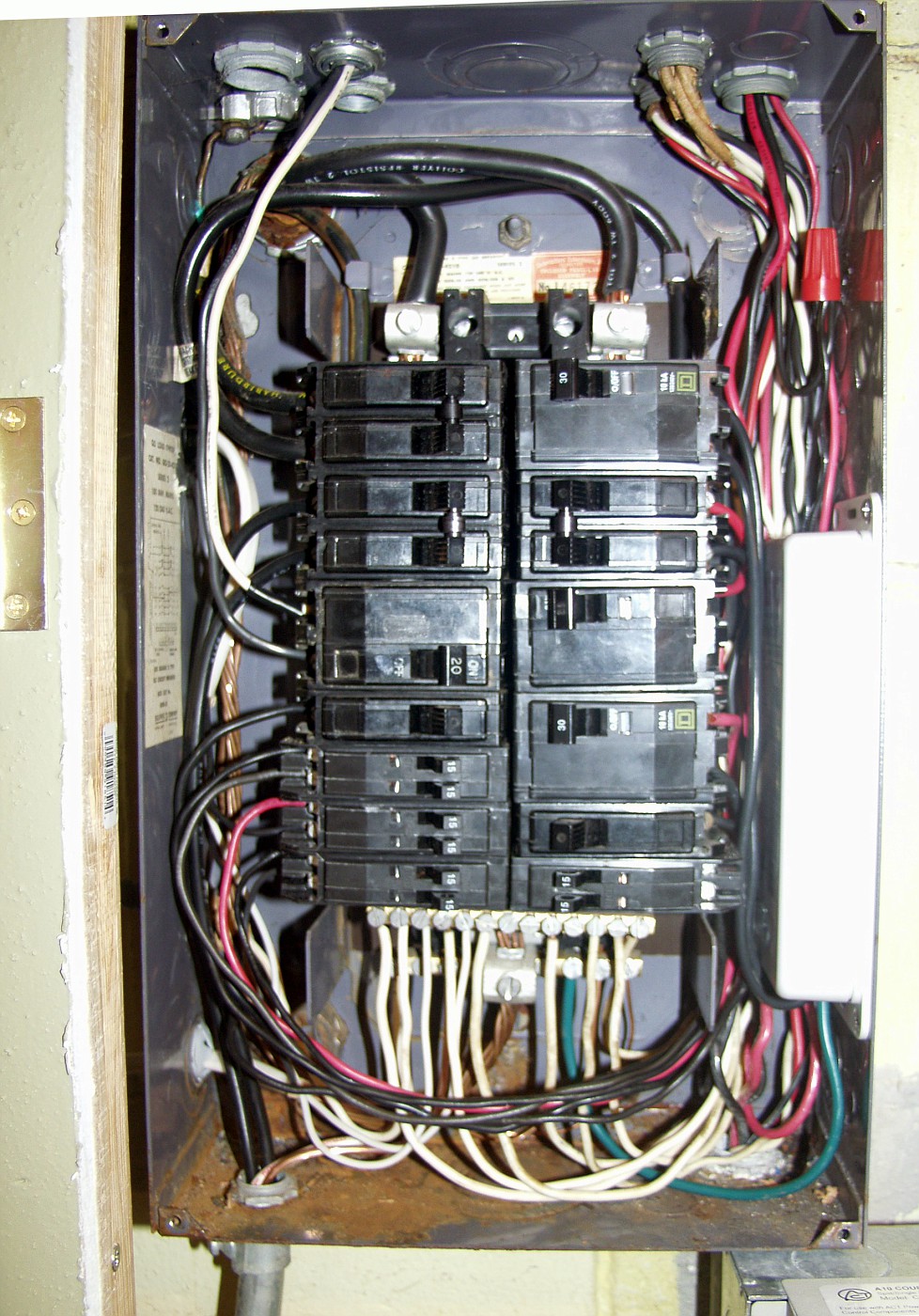kwilcox
Active Member
I just finished installing a TVSS (whole house surge protector) in my electrical panel and have been researching these on some of the electrical contractor forums. Mine is an APC PMP1X. here's a shot of this device in my panel:

(the TVSS is the white box on the right side).
Anyway, there are many posts on the contractor forums which state that these devices are pretty much useless unless the lead length is kept to 6" or less. I've shortened mine up as much as possible, but I still have a 9" lead length. APC states that the leads should be kept "as short as possible" and that the device should be connected to a 30Amp double pole breaker "as close to the main disconnect as possible". However, the device also has a green ground connected wire which means that my combined lead length has to be longer than 12" (since this device protects L-L and L-G) simply because my ground bus is on the opposite side of the panel from my line entry point.
Has anybody here either installed or had one of these devices installed? Because we run lots of expensive HA gear I would assume these devices are pretty familiar to posters here. How have you set up yours? Is my installation useless because my L-L leads are 9" long?

(the TVSS is the white box on the right side).
Anyway, there are many posts on the contractor forums which state that these devices are pretty much useless unless the lead length is kept to 6" or less. I've shortened mine up as much as possible, but I still have a 9" lead length. APC states that the leads should be kept "as short as possible" and that the device should be connected to a 30Amp double pole breaker "as close to the main disconnect as possible". However, the device also has a green ground connected wire which means that my combined lead length has to be longer than 12" (since this device protects L-L and L-G) simply because my ground bus is on the opposite side of the panel from my line entry point.
Has anybody here either installed or had one of these devices installed? Because we run lots of expensive HA gear I would assume these devices are pretty familiar to posters here. How have you set up yours? Is my installation useless because my L-L leads are 9" long?
